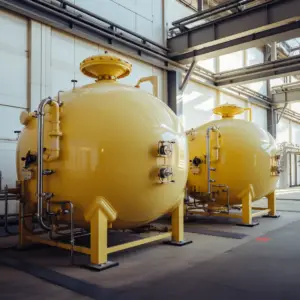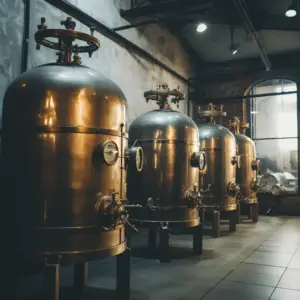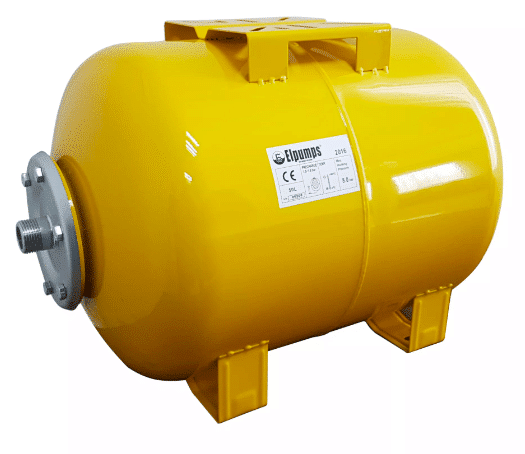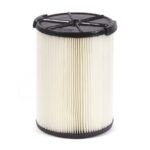Expansion tanks vs Pressure tanks, With so many jargons, instruments, and technological advancements, the plumbing industry might be complicated. And choosing whether to use a pressure tank or an expansion tank is one of the most perplexing tasks among homeowners. They look and operate just about the same way, so which one should you choose, or what are the differences anyway?
Table of Contents
Expansion Tank Vs Pressure Tank: A Comparison

Well, the biggest difference between expansion tanks and pressure tanks is in where they are used. For instance, expansion tanks are installed above tanks and are used to prevent damage caused when hot water expands.
Pressure tanks, on the other hand, are installed near the well pump and are used to protect and enhance its longevity.
Despite their similarities, these plumbing components cannot be used interchangeably. We’ll examine pressure tanks and expansion tanks in more detail in this article. We’ll also assist you in deciding whether you require one, both, or none of them.
So, What Is An Expansion Tank?
In simple words, an expansion tank is a small tank that is attached to the pipes above your home’s water heater system. The main function of this vessel is to help control the water pressure that results from the fact that water expands when heated.
In absence of the expansion chamber, the hot water in the heater would create more pressure, which could cause damage to the plumbing system by affecting the valves, pipes, joints, and even the water heater.
Thermal expansion can occur multiple times a day, depending on how often you use hot water in your home. Note that the expansion occurs due to the fact that water is non-compressible. Therefore heating causes it to expand, increasing the overall water volume. In other words, the expansion tank helps to absorb pressure, so there will be no stress on your plumbing system.
What is a Pressure Tank?
On the other hand, a pressure tank is a fiberglass or steel container that is connected to a home’s plumbing system to regulate water pressure.
When the pump is off, the pressure tank helps keep water pressure steady and provides a continual flow of water into your house.
In other words, the pressure tank holds water that is obtained from a well and delivers it, under the proper pressure, to the house. It also contains compressed air in it, which is used to exert force on the water.
In absence of the pressure tank, the water pump would continuously run on and off. The pump’s lifespan would be shortened by this impact, which would lead to cycling issues.
Pressure Tank vs Expansion Tank: What’s the Difference?

As mentioned, the biggest difference between pressure tanks and expansion tanks is their functionality. However, there are other slight variations such as installation, durability, and cost. It is important to understand these differences to make sure that you make the right choice for your intended use.
Functionality
Expansion tanks and pressure tanks are similar in that they both serve to protect plumbing fixtures by controlling the water pressure. That said, there are some differences in how and where they carry out these functions.
An expansion vessel helps in controlling thermal expansion to safeguard the heater, pipes, couplings, valves, and other components of the plumbing system. It works by holding excess water and steam released from the water heating process in the boiler. This process also serves to remove excess pressure from any plumbing fixtures connected to the heater.
Pressure tanks, on the other hand, work with a water pump and serves as a reservoir. They store water which is then pumped into the home through pressurized air. To accomplish this, the tank detects water pressure whereby if the pressure is low, it automatically takes on the role of supplying water to the home. This functionality helps to make sure that there’s always water available, even when the pump is turned off.
In essence, the pressure tank does away with the need to activate the water pump each time you require water in your home. As a result, it increases the water pump’s lifespan and lowers the cost of repair or replacement.
Cost
The price of any tank varies based on its quality and capacity. Costs for residential expansion tanks typically range from $40 to $200. Commercial expansion tanks can cost up to $1000, depending on the capacity and design.
Pressure tanks, on the other hand, are a tad more expensive than expansion tanks. The cost of a domestic pressure vessel typically falls between $50 to $650. Commercial pressure tanks could cost up to $1500 for this item.
It is important to note that the pressure tank’s size varies based on demand. Large tanks are mostly used in larger houses, apartments, and commercial buildings.
As such, you can expect the budget to be higher to ensure that the tank has enough capacity to hold the necessary amount of water.
Durability
Another crucial factor to take into account when comparing expansion tanks and pressure tanks is durability. In general, any water tank must be durable. You want it to function flawlessly for as long as possible.
Usually, expansion tanks often have a longer lifespan than pressure tanks. With proper maintenance, an expansion vessel lasts anywhere between 6 to 10 years because of the durable materials and strong construction.
Pressure tanks, on the other hand, can survive for five to seven years. Perhaps the best part is that the vessel won’t require much maintenance during this time.
Installation
Compared to pressure tanks, expansion tanks are generally simpler to install. The complexity of pressure tank systems is probably the main cause of the difference. As a result, installing a pressure bladder system will most likely be more expensive than installing an expansion tank.
It is important that you work with a professional, especially for the installation. They might be able to install these systems with ease because they understand the intricacies and nuances of doing so.


